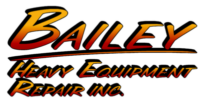Common Issues You’ll See with Utility Vehicles
Even though they’re bigger, utility vehicles like tow trucks, snowplows or any vehicle used for heavy hauling are designed to handle extreme loads and work in adverse conditions. However, they’re still susceptible to a variety of problems. Keep reading to learn the top issues that come with utility vehicles and how they can be avoided:
- Poor fuel economy: Unlike passenger cars, a utility vehicle’s miles per gallon isn’t always considered during manufacturing. This leads to higher fuel costs, which is particularly problematic with higher diesel costs these days.
- Brake wear: Some of the most common problems with utility vehicles are related to the truck’s braking system. Since they’re heavier, utility vehicles take a longer time to slow down, and the brakes have to work overtime to bring the truck to a stop. Crew members must be aware of the added braking time when they’re driving utility vehicles.
- Uneven tire wear: Any car, SUV or pickup truck can have trouble with uneven tire wear, but this problem is more pronounced with heavy-duty utility vehicles. Uneven tread wear on individual tires or slight pulling indicates that the tires aren’t up to par and should be replaced.
- Rollovers: Since they’re often top-heavy, utility vehicles can roll over when making sharp turns. While this is an issue on any roadway, the chance of a rollover gets even higher while driving on winding roads or in winter weather conditions.
- Reduced visibility: Another safety problem that often comes with utility vehicles is reduced visibility. Blind spots behind the truck or having trouble seeing what’s in front of the vehicle can lead to collisions or a variety of workplace injuries.
How can these issues be avoided?
Thankfully, you can typically avoid the most common problems with utility vehicles. Follow these tips to keep every truck in your fleet in tip-top shape:
- Schedule routine maintenance: The top way to prevent breakdowns with utility vehicles is to bring them in for routine maintenance. Along with preventing disasters, a regular tune-up can also help improve fuel economy. Consider bringing your entire fleet in for maintenance at once to ensure every utility vehicle performs its best.
- Make repairs as soon as possible: It’s easy to ignore a slight problem with a utility vehicle or even a blinking dashboard light. However, turning a blind eye to issues leads to more expensive repairs in the future. Even though it means some added downtime, it’s best to bring your utility vehicle in for repairs when something’s amiss.
- Use highly trained drivers: You can avoid issues like rollovers or accidents caused by reduced visibility by hiring properly trained and experienced drivers. It’s also a good idea to schedule routine training sessions, so drivers are always up to speed on the latest safety regulations.
Whether you’ve experienced any of the top issues that come with utility vehicles firsthand or you’d like to avoid them altogether, talk to the experts at Bailey Heavy Equipment Repair, Inc. We offer mobile utility vehicle repair within a 200-mile radius, and we’re available 24/7 to make emergency repairs.
